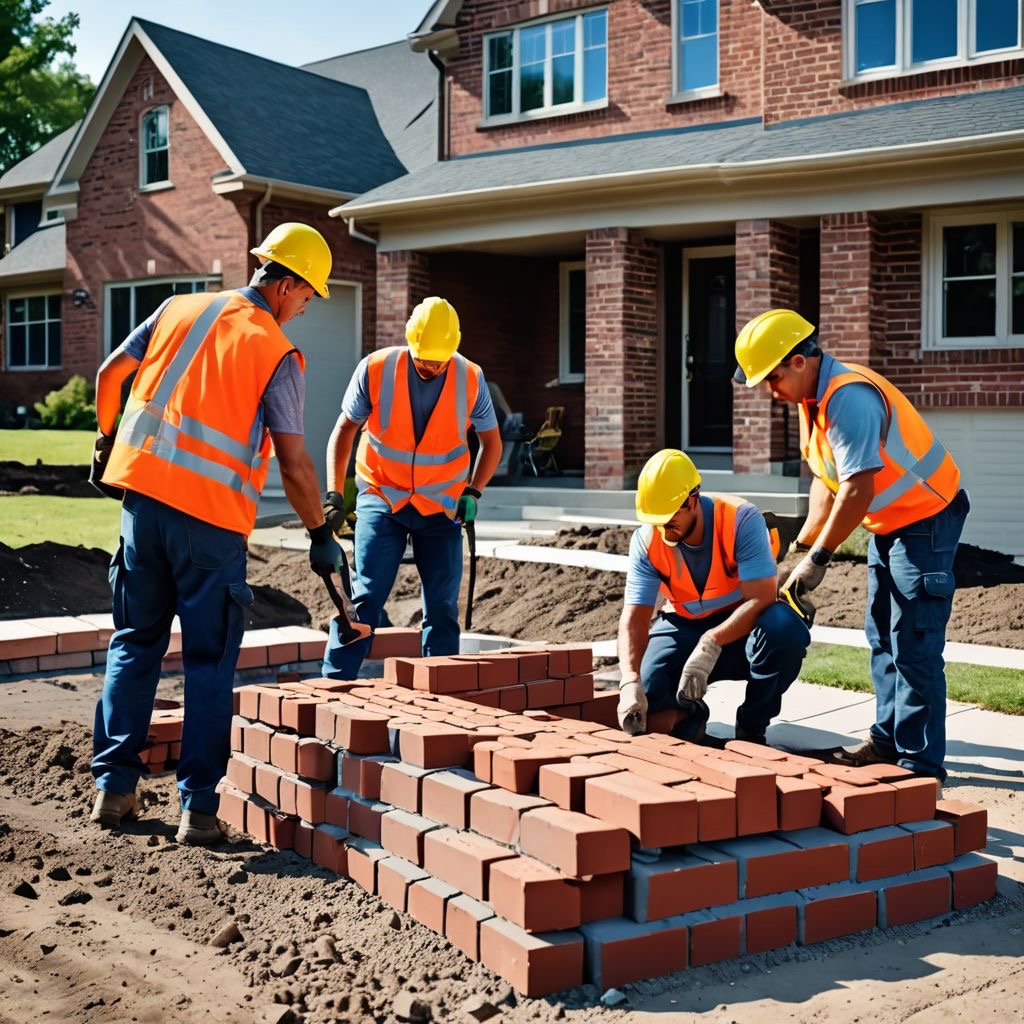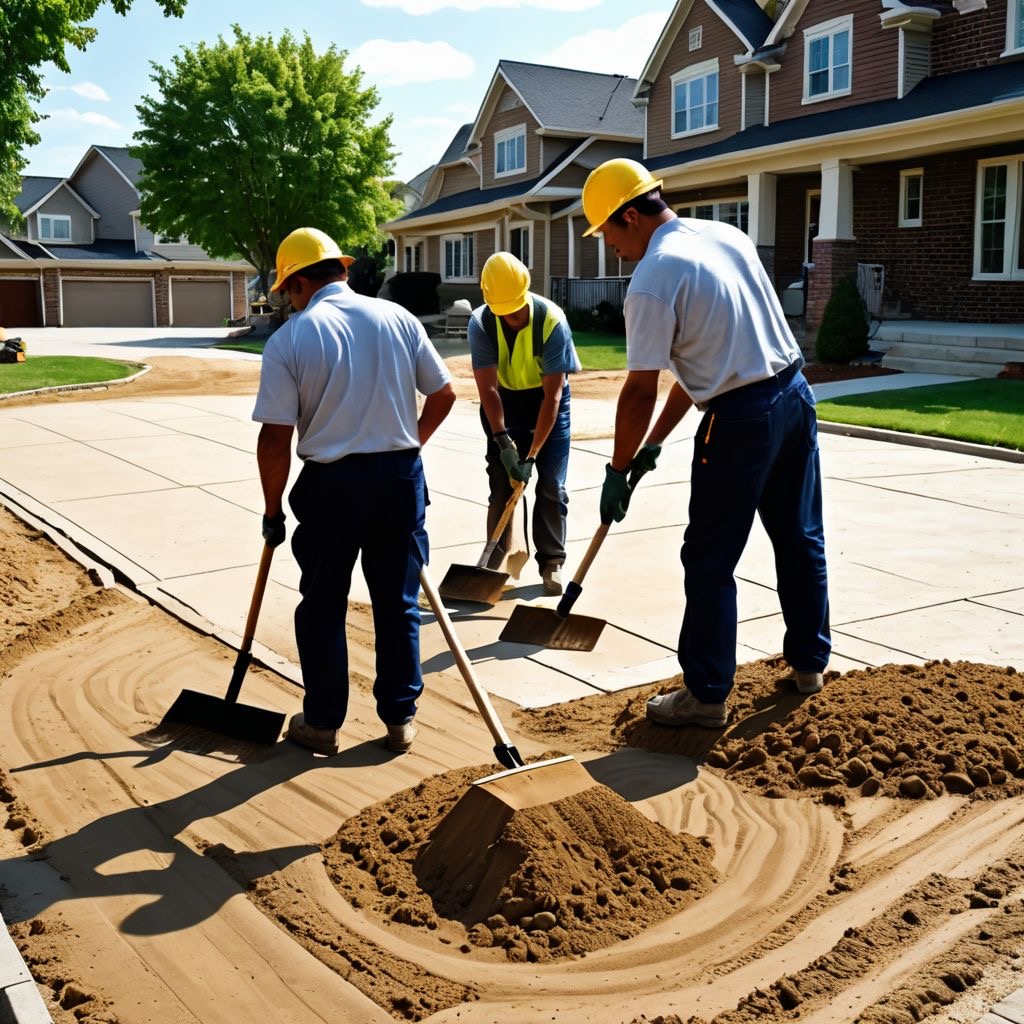
Table of Contents:
1. Introduction
2. Understanding Paving Stones and Interlocking Bricks
- 2.1 What Are Paving Stones?
- 2.2 The Beauty of Interlocking Bricks
- 2.3 Benefits of Using Paving Stones and Interlocking Bricks
3. Assessing the Condition of Your Winnipeg Driveway or Patio
- 3.1 Signs of Wear and Tear
- 3.2 Importance of Regular Maintenance
4. Preparing for the Resetting Process
- 4.1 Tools and Materials Needed
- 4.2 Clearing the Area
5. Step-by-Step Guide to Resetting Paving Stones and Interlocking Bricks
- 5.1 Removing Existing Stones
- 5.2 Preparing the Base
- 5.3 Replacing and Leveling Stones
- 5.4 Compaction and Joint Filling
6. Maintaining Your Paved Surfaces
- 6.1 Routine Maintenance Practices
- 6.2 Seasonal Considerations in Winnipeg
7. When to Call in the Experts
- 7.1 Understanding Your Limits
- 7.2 Choosing the Right Landscaping Contractors
8. Conclusion
1. Introduction:
In a world where home aesthetics and functionality collide, the driveway and patio are the unsung heroes of our outdoor spaces. These areas are constantly under pressure, enduring everything from seasonal snowstorms to leisurely summer barbecues. But let’s face it—over time, even the best-laid paving stones and interlocking bricks can become worn or misaligned, creating a not-so-charming uneven surface.

In Winnipeg, where homeowners experience a diverse climate, outdoor surfaces demand our attention far beyond the usual yard maintenance. From the bitter cold of winter to the fleeting warmth of summer, the elements take their toll. Have you ever tripped over a rogue stone or been frustrated by puddles forming in the low spots of your patio? This guide is designed to walk you through the essential steps for resetting paving stones and interlocking bricks in your driveways and patios with a friendly nudge, a bit of humor, and plenty of practical advice.
Whether you’re a homeowner looking to spruce up your outdoor space or a commercial property manager seeking to maintain your establishments, we hope this comprehensive guide will equip you with everything you need to know about landscaping in Winnipeg specifically on the subject of resetting your hardscaping elements. We’ll explore the beauty and benefits of paving stones, assess the condition of your existing surfaces, and navigate the process of resetting them with ease. Suit up, grab your work gloves, and let’s dive into the wonderful world of paving stone maintenance!
Contact us today for your free estimate.

2. Understanding Paving Stones and Interlocking Bricks:
2.1 What Are Paving Stones?
Let's kick things off by defining paving stones. These sturdy, often rectangular or square-shaped stones are designed for outdoor surfaces, including driveways and patios. They come in various materials—like concrete, clay, and natural stone—making them versatile for different aesthetics. What’s not to love about paving stones? They're like the reliable sidekick in your yard, providing a chic yet functional platform for everything from your morning coffee to those epic summer bashes.
Contact us today for your free estimate.
2.2 The Beauty of Interlocking Bricks
Now, interlocking bricks are paving stones that fit together like your favorite puzzle. They're specifically designed to work in harmony, eliminating the need for mortar while providing a sturdy surface that can handle the gnarliest of Winnipeg winters. Interlocking bricks not only enhance the look of your driveway or patio but also distribute weight evenly, reducing the chance of cracking or shifting. They’re like the Beyoncé of outdoor flooring—glamorous, resilient, and always in style.

2.3 Benefits
Why should you choose paving stones or interlocking bricks, you ask? Here are some compelling reasons:
- Durability: They can withstand the harsh elements, making them perfect for our Winnipeg-style diverse climate.
- Aesthetic Appeal: Available in various colors, shapes, and textures, paving stones allow for creative architectural designs to enhance your landscaping.
- Low Maintenance: Once laid down properly, they require minimal upkeep compared to other paving options.
- Cost-Effectiveness: With proper care and resetting, paving stones and interlocking bricks can last a lifetime without frequent replacements.
3. Assessing the Condition of Your Driveway or Patio:
3.1 Signs of Wear and Tear
You might be wondering if it’s time to reset those stubborn paving stones. Signs of wear can include uneven surfaces, cracked stones, grass or weeds popping up between cracks, and even pooling water after a rainstorm. If you're finding yourself tilted at awkward angles while trying to walk across your driveway or patio, it’s a classic sign that your pavement needs attention—hello, project!
3.2 Importance of Regular Maintenance
Regular maintenance is essential in maintaining your driveway or patio. Just like you wouldn’t skip dental appointments if you wanted to keep your smile shiny, neglecting your paved surfaces can lead to further damage, which may cost you more in the end. Embracing a proactive approach helps catch issues before they become overwhelming, and it keeps your outdoor space looking fresh and inviting. Regular sweeping, checking for loose stones, and cleaning out debris will prolong the life of your structure and save you from future headaches.
Contact us today for your free estimate.
Up Your home's curb appeal with Sunshine Maintenance & Landscaping
4. Preparing for the Resetting Process:
4.1 Tools and Materials Needed
Before diving into action, you must gather your tools and materials because starting without them is like showing up to a pool party in a winter coat—totally puzzling! Here’s a quick breakdown of what you'll need:
Tools:
- Rubber mallet
- Level
- Trowel or brick hammer
- Plate compactor (you can rent these from hardware stores)
- Broom
- Work gloves
Materials:
- Sand (for joint filling)
- Gravel or crushed stone (for base preparation)
- Landscape fabric (to prevent weeds)
4.2 Clearing the Area
Before you start, clear the area of furniture, pots, and any decor that may have taken residence on your patio. Unless you want a surprise in the middle of your project—like the smell of last week’s barbeque—move any large items out of the way. You should also clear away any weeds, debris, or accumulated dirt. Imagine you’re rebooting that old, clunky computer; a fresh start is crucial!
5. Step-by-Step Guide to Resetting Paving Stones and Interlocking Bricks:
5.1 Removing Existing Stones
Now that your workspace is prepped, it's time for some good old-fashioned labor! Use your trowel or brick hammer to carefully lift the existing stones. If they’re stubborn, a little persuasion with a rubber mallet should do the trick. As you remove the stones, be sure to place them in a secure location; you’ll be reusing them soon.
Pro Tip: Take pictures as you go to remember their original layout. It’ll be like your landscaping scrapbook!
5.2 Preparing the Base
Once the stones are removed, assess the base layer. If your base material—gravel or crushed stone—seems uneven or damaged, it’s time to replace or level it. Compact the base using a plate compactor to create a solid foundation. This step is crucial because a stable base is the backbone of a durable surface; wobbly bases lead to wobbly stones, and that’s something we want to avoid at all costs!

5.3 Replacing and Leveling Stones
Now comes the fun part—replacing the stones! Start laying the first stone in a corner or edge and work your way across the surface. Use a level frequently to ensure alignment and evenness. If you’re working with interlocking bricks, be sure to fit them snugly together—you want them to be good friends that don’t wander apart after a few seasons!
Contact us today for your free estimate.
5.4 Compaction and Joint Filling
Once all the stones are in place, it’s time to compact them. Gently tap each stone with your rubber mallet to settle them properly. Then, fill the joints with sand using a broom. Sweep the sand into the gaps, ensuring they’re well-packed. This sandy embrace not only adds stability but keeps pesky weeds from saying hello.

6. Maintaining Your Paved Surfaces:
6.1 Routine Maintenance Practices
You’ve done the hard work, so let’s keep those stones looking fabulous! Regular maintenance will involve:
- Sweeping: Keep your patio or driveway clean from dust and debris.
- Weed Management: Check for and remove any pesky weeds that pop up between the stones.
- Periodic Re-sanding: Over time, the sand between the stones may wash away. Remember to refill those joints occasionally to maintain stability.
6.2 Seasonal Considerations in Winnipeg
As a Winnipeg homeowner, you know all too well the Winnipeg-style extreme weather conditions we endure. Here are some seasonal tips:
- Spring/Summer: During the warmer months, keep up with regular maintenance to prevent weeds and other casual damage.
- Autumn: Rake leaves as they can trap moisture and promote mildew.
- Winter: Avoid using salt on your driveways; it can damage the stones. Instead, opt for sand to provide traction.
Contact us today for your free estimate.
Ready to chat about your garden and landscaping goals?

Reach out by call or text to: 204-229-9789 or click here to submit your information today to arrange a “no obligation” introductory phone call. We look forward to helping you transform your yard.
Tips on how to prepare for a consultation meeting with a landscape contractor
7.When to Call in the Experts:
7.1 Understanding Your Limits
Now that you’re well-versed in the resetting process, you might wonder, “When should I throw in the towel and call the pros?” If the damage is extensive, or if you have an intricate pattern that requires precise placement, then it’s best to hand over the reins to skilled professionals. Remember, there’s no shame in asking for help!
7.2 Choosing the Right Landscaping Contractors
When the time comes to finding and hiring the type of professional landscaper Winnipeg homeowners have learned to trust and rely on, you may wonder how to find the right landscaping contractors. Here are a few tips:
- Research Local Contractors: Search for landscaping companies Winnipeg or landscaping contractors near me.
- Check Reviews: Look for customer feedback and testimonials to gauge quality and reliability.
- Get Quotes: Compare prices and services—don’t be afraid to ask questions!
Contact us today for your free estimate.



